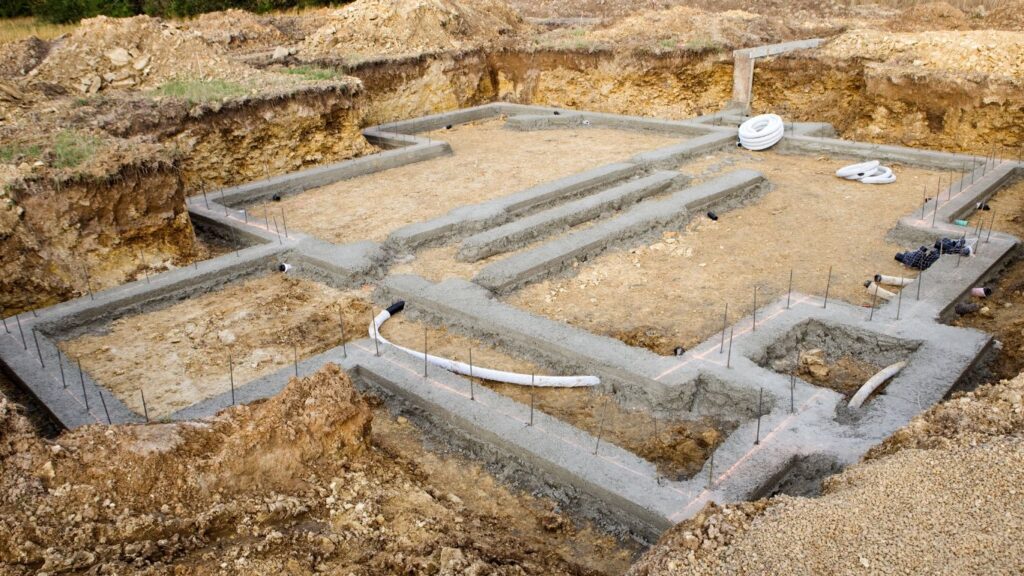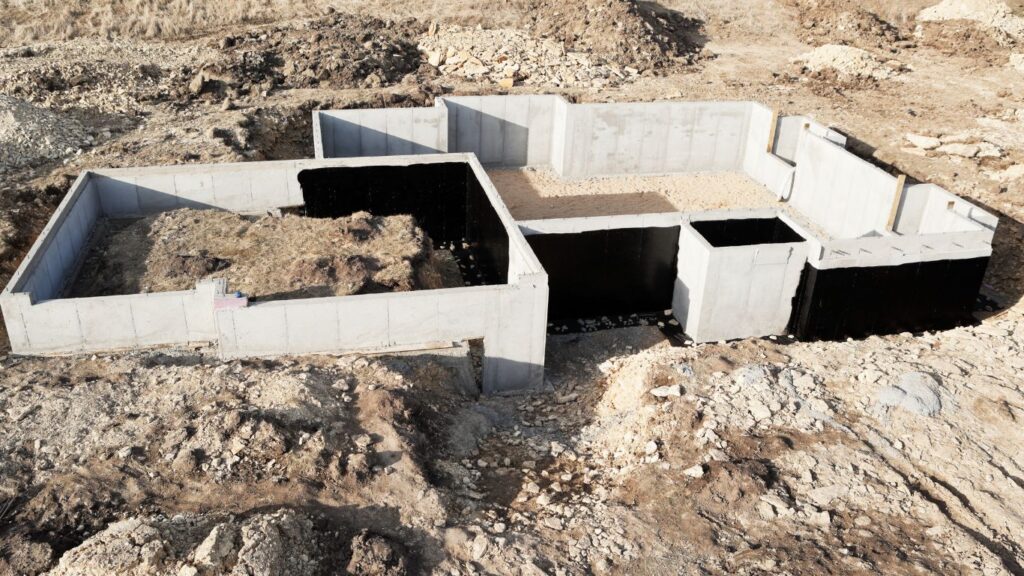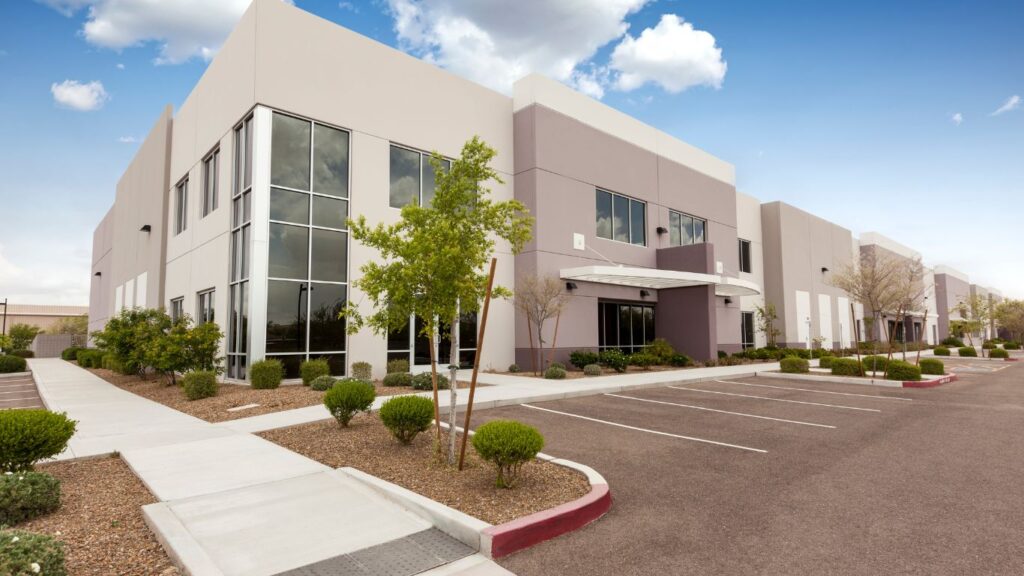When it comes to building or renovating a home, one crucial aspect often overlooked is the foundation. A solid foundation provides the necessary support for the entire structure, ensuring stability and longevity. In this article, we’ll explore three types of basement foundations that every homeowner should be familiar with. Visit
Slab-on-Grade Foundations
Definition and Characteristics: A slab-on-grade foundation, also known as a monolithic foundation, is a single, continuous concrete slab that serves as both the foundation and the floor of the house. This type is common in regions with warm climates and stable soil conditions.
Pros and cons: Pros:
- Cost-effective
- Suitable for areas with high water tables
- Minimal risk of termite infestation
Cons:
- Limited insulation options
- Challenging to repair plumbing beneath the slab
- Susceptible to cracks due to soil movement
Ideal Situations for This Type: Slab-on-grade foundations are ideal for areas with minimal frost depth and stable soil. They are commonly used in warmer climates where the risk of freezing is low.
Crawlspace Foundations
Explanation of Crawlspace Foundations: A crawlspace foundation elevates the home a few feet above the ground, creating a small space beneath the living area. This type provides access to utilities and allows for ventilation.
Advantages and disadvantages:
Advantages:
- Allows easy access to plumbing and electrical systems
- Provides a buffer against moisture
- Suitable for areas with uneven terrain
Disadvantages:
- Prone to pest intrusion
- Limited storage space
- Requires proper ventilation to prevent mold growth
Considerations for Installation: Crawlspace foundations are suitable for homes in areas with moderate climates and where the soil is prone to moisture. Proper ventilation and moisture control are crucial for preventing structural issues.
Full Basement Foundations
A Comprehensive Explanation of Full Basements: A full basement foundation involves the construction of a below-ground level that spans the entire footprint of the house. This foundation type provides additional living or storage space and is common in colder climates.
Pros and cons:
Pros:
- Additional living or storage space
- Insulation benefits
- Resistant to soil movement
Cons:
- Higher construction costs
- Vulnerable to water damage without proper waterproofing
- May require additional structural support
Construction Process and Costs: The construction process for a full basement involves excavation, foundation wall installation, and waterproofing. While the initial costs may be higher, the additional space and insulation benefits often make it a worthwhile investment.
Factors Influencing Foundation Type Selection
Choosing the right foundation type for your home involves considering several factors. Soil conditions, climate, and budget constraints play a crucial role in determining the most suitable option.
Soil Conditions: The type of soil on your property can impact the stability and durability of the foundation. Consult with a geotechnical engineer to assess soil conditions and make informed decisions.
Climate Considerations: Climate plays a significant role in foundation durability. Consider factors such as frost depth, rainfall, and temperature variations when selecting a foundation type.
Budget Constraints: Your budget will inevitably influence your choice of foundation. While some types may be more cost-effective initially, it’s essential to consider long-term maintenance and energy efficiency.
Common Issues and Solutions
Each foundation type comes with its own set of challenges. Understanding potential issues and implementing preventive measures is crucial for maintaining the integrity of your home.
Addressing Potential Problems:
- Slab-on-Grade: regular inspection for cracks, proper sealing, and careful landscaping to prevent soil erosion.
- Crawlspace: effective moisture control, periodic pest inspections, and proper ventilation.
- Full Basement: Professional waterproofing, regular inspections for water leaks, and proper drainage systems.
Maintenance Tips: Regular maintenance, including inspections, repairs, and moisture control, is essential for preventing major issues. Homeowners should be proactive in addressing any signs of foundation problems.
Choosing the Right Foundation for Your Home
Selecting the appropriate foundation type requires a careful evaluation of your specific needs and the conditions of your property. Consulting with professionals, such as architects and engineers, can provide valuable insights.
Evaluating Your Specific Needs: Consider factors like family size, intended use of the basement space, and long-term plans for the property. Your choice should align with your lifestyle and future goals.
Consulting with professionals: Engage with experts in the field who can assess your property and provide tailored recommendations. Their expertise can help you make informed decisions that align with your goals and budget.
Cost Comparison
Understanding the costs associated with each foundation type is crucial for making an informed decision. While initial costs are a factor, considering long-term expenses is equally important.
Breakdown of Costs:
- Slab-on-Grade: lower initial costs but may lack energy efficiency.
- Crawlspace: moderate initial costs with potential long-term savings on utilities.
- Full Basement: higher initial costs but offers additional living space and insulation benefits.
Long-Term Financial Considerations: Factor in maintenance costs, energy efficiency, and potential resale value when evaluating the long-term financial implications of your foundation choice.
Environmental Impact
In an era focused on sustainability, considering the environmental impact of your choices is essential. Different foundation types have varying degrees of eco-friendliness.
Sustainability of Different Foundation Types:
- Slab-on-Grade: minimal environmental disruption during construction.
- Crawlspace requires less excavation, reducing environmental impact.
- Full Basement: higher initial environmental impact but potential long-term energy efficiency benefits.
Eco-Friendly Options: Explore eco-friendly construction materials and practices to minimize the environmental footprint of your foundation.
Technology Advancements in Basement Foundations
As technology continues to advance, innovations in foundation construction have emerged. These advancements contribute to the durability and efficiency of basement foundations.
Innovative Solutions:
- Advanced waterproofing materials and techniques.
- Smart foundation monitoring systems.
- Sustainable construction materials.
Impact on Durability and Efficiency: Technological advancements enhance the durability of foundations, improve energy efficiency, and provide homeowners with greater control over their home’s structural integrity.
DIY Considerations
While some homeowners may consider DIY foundation projects to save costs, it’s essential to weigh the risks and rewards.
Feasibility of DIY Foundation Projects: Foundation construction is a complex process that requires specialized knowledge and skills. DIY projects may lead to costly mistakes and compromise the structural integrity of the home.
Risks and Rewards: Consider the potential risks of DIY projects, including safety hazards and code compliance issues. Professional contractors bring expertise and ensure that foundations meet building standards.
Case Studies
Real-life examples of successful foundation installations provide valuable insights into the practical aspects of each foundation type.
Real-Life Examples:
- Slab-on-Grade: homes in warm climates with stable soil conditions.
- Crawlspace: properties in areas with moderate climates and uneven terrain.
- Full Basement: Homes in colder climates with a need for additional living space.
Lessons Learned: Analyzing case studies helps homeowners understand the challenges and benefits associated with different foundation types, informing their decision-making process.
Future Trends in Basement Foundations
The future of basement foundations is shaped by emerging technologies and changing preferences. Staying informed about these trends can help homeowners make forward-thinking decisions.
Predictions for Emerging Technologies:
- Integration of smart home technologies into foundation systems.
- Advancements in sustainable and eco-friendly construction materials.
Changing Preferences in Foundation Choices: Homeowners are increasingly prioritizing energy efficiency, sustainability, and smart home integration when choosing foundation types. Stay updated on industry trends to make informed choices.
Expert Opinions and Recommendations
Gaining insights from construction professionals and industry experts is invaluable when navigating the complexities of foundation selection.
Insights from Construction Professionals:
- Seek advice from architects, engineers, and contractors with experience in your region.
- Consider regional building codes and standards.
Industry Standards and Best Practices: Align your choices with industry standards and best practices to ensure the longevity and structural integrity of your home.
Conclusion
In conclusion, choosing the right basement foundation for your home is a decision that requires careful consideration of various factors. Whether you opt for a slab-on-grade, crawlspace, or full basement foundation, understanding the advantages, disadvantages, and long-term implications is crucial. Consult with professionals, evaluate your specific needs, and stay informed about emerging trends to make the best choice for your home. Visit
FAQs (Frequently Asked Questions)
-
Q: Can I convert a crawlspace into a full basement?
- Converting a crawlspace into a full basement is a complex undertaking that requires professional expertise. It’s crucial to assess the feasibility and costs with a qualified contractor.
-
Q: Are full basements more prone to flooding?
- A: Full basements can be vulnerable to flooding without proper waterproofing. Implementing effective drainage systems and waterproofing measures can mitigate this risk.
-
Q: What is the average lifespan of a slab-on-grade foundation?
- A: The lifespan of a slab-on-grade foundation depends on factors like soil conditions and maintenance. With proper care, these foundations can last for several decades.
-
Q: Are there eco-friendly options for basement foundations?
- Yes, eco-friendly options include using sustainable construction materials and incorporating energy-efficient technologies into foundation systems.
-
Q: Can I install a full basement in any climate?
- A: While full basements are more common in colder climates, they can be installed in any climate. However, factors like soil conditions and construction costs should be carefully considered






